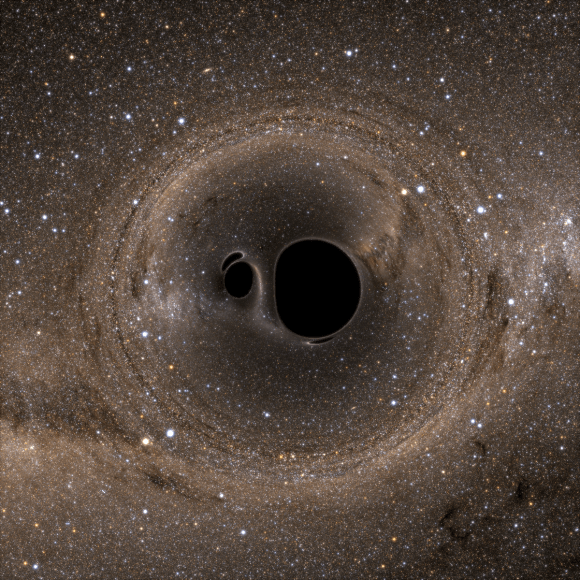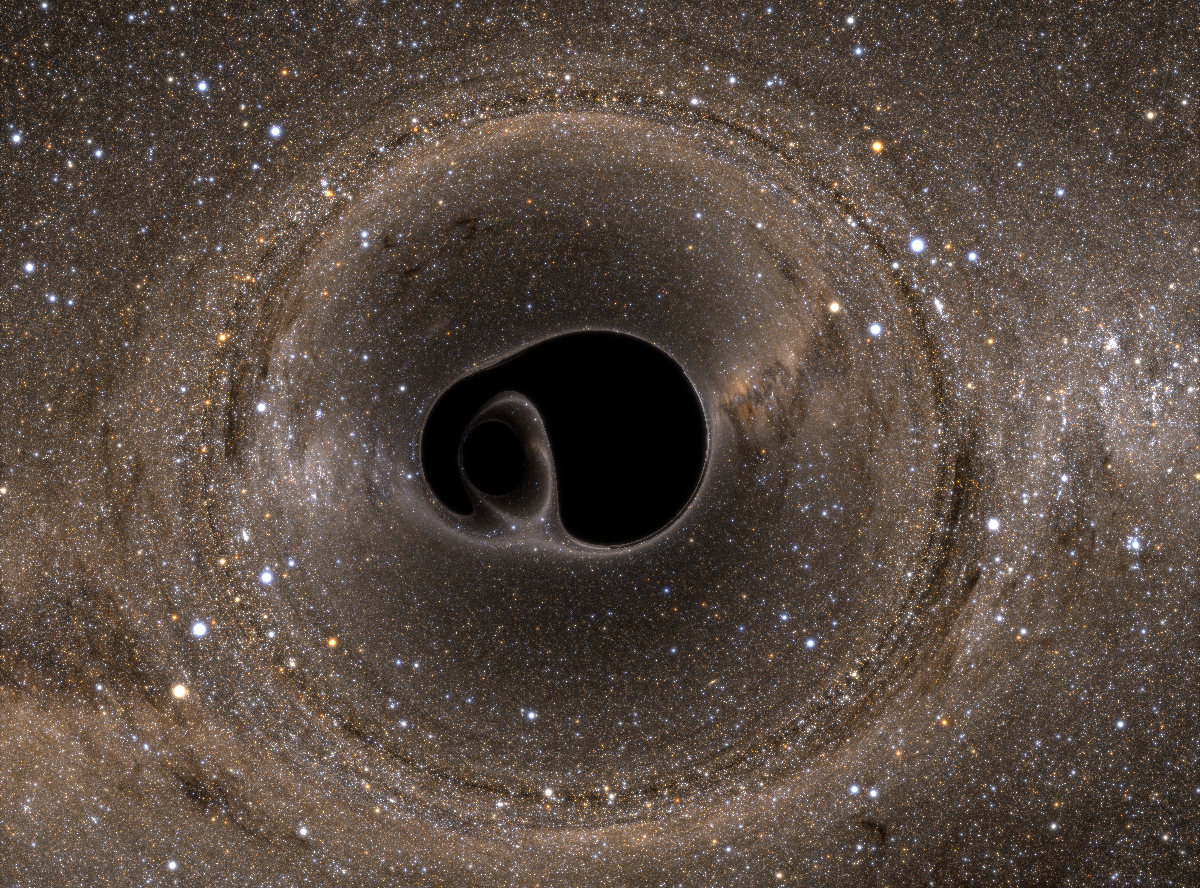A black hole is an extraordinarily massive, improbably dense knot of spacetime that makes a living swallowing or slinging away any morsel of energy that strays too close to its dark, twisted core. Anyone fortunate (or unfortunate) enough to directly observe one of these beasts in the wild would immediately notice the way its colossal gravitational field warps all of the light from the stars and galaxies behind it, a phenomenon known as gravitational lensing.
Thanks to the power of supercomputers, a curious observer no longer has to venture into outer space to see such a sight. A team of astronomers has released their first simulated images of the lensing effects of not just one, but two black holes, trapped in orbit by each other’s gravity and ultimately doomed to merge as one.
Astronomers have been able to model the gravitational effects of a single black hole since the 1970s, but the imposing mathematics of general relativity made doing so for a double black-hole system a much larger challenge. Over the last ten years, however, scientists have improved the accuracy of computer models that deal with these types of calculations in an effort to match observations from gravitational wave detectors like LIGO and VIRGO.
The research collaboration Simulating Extreme Spacetimes (SXS) has begun using these models to mimic the lensing effects of high-gravity systems involving objects such as neutron stars and black holes. In their most recent paper, the team imagines a camera pointing at a binary black hole system against a backdrop of the stars and dust of the Milky Way. One way to figure out what the camera would see in this situation would be to use general relativity to compute the path of each photon traveling from every light source at all points within the frame. This method, however, involves a nearly impossible number of calculations. So instead, the researchers worked backwards, mapping only those photons that would reach the camera and result in a bright spot on the final image – that is, photons that would not be swallowed by either of the black holes.

As you can see in the image above, the team’s simulations testify to the enormous effect that these black holes have on the fabric of spacetime. Ambient photons curl into a ring around the converging binaries in a process known as frame dragging. Background objects appear to multiply on opposite sides of the merger (for instance, the yellow and blue pair of stars in the “northeast” and the “southwest” areas of the ring). Light from behind the camera is even pulled into the frame by the black holes’ mammoth combined gravitational field. And each black hole distorts the appearance of the other, pinching off curved, comma-shaped regions of shadow called “eyebrows.” If you could zoom in with unlimited precision, you would find that there are, in fact, an infinite number of these eyebrows, each smaller than the last, like a cosmic set of Russian dolls.
In case you thought things couldn’t get any more amazing, SXS has also created two videos of the black hole merger: one simulated from above, and the other edge-on.
The SXS collaboration will continue to investigate gravitationally ponderous objects like black holes and neutron stars in an effort to better understand their astronomical and physical properties. Their work will also assist observational scientists as they search the skies for evidence of gravitational waves.
Check out the team’s ArXiv paper describing this work and their website for even more fascinating images.


Isn’t it cool how the ring of stars seems to rotate around the BHs – due only to space warping? I wonder if the speed of rotation of such a ring can provide information on the speed of rotation of the BH itself? In the sim, the ring keeps rotating even after the merger…
I like the Einstein ring within an Einstein ring that happens on the side view!